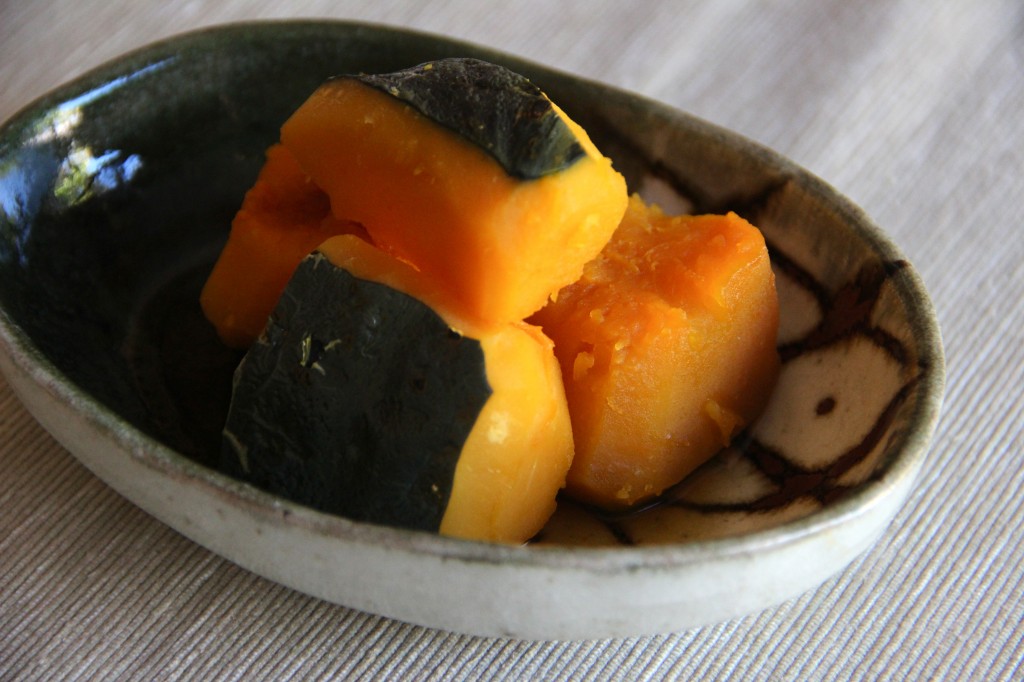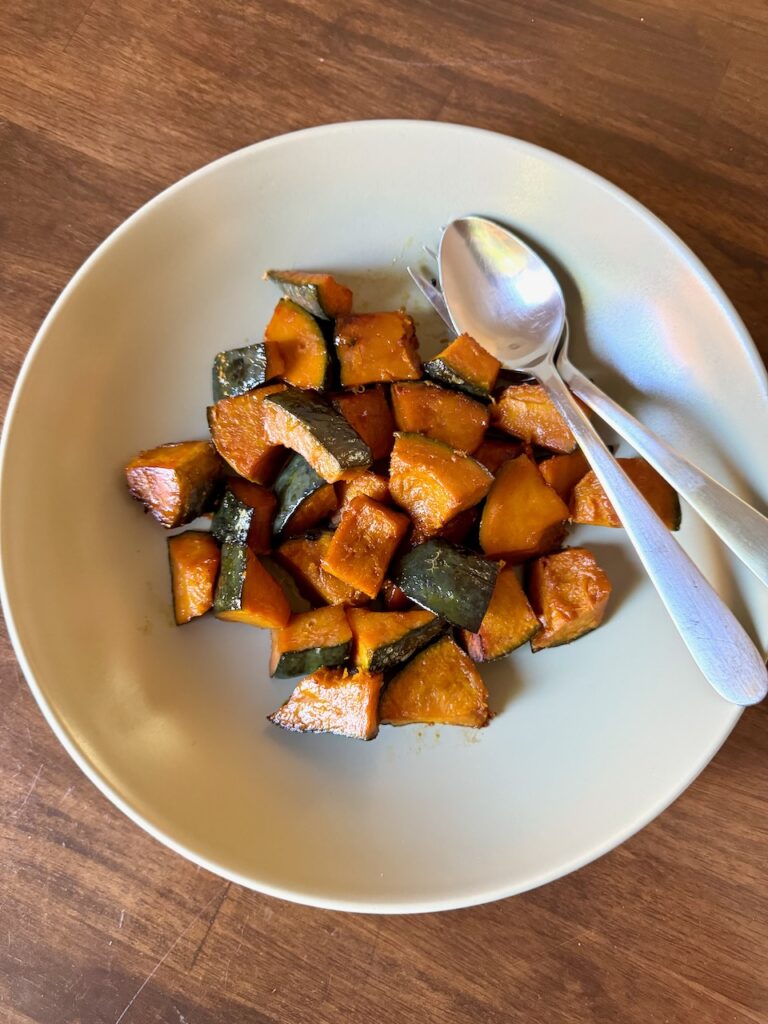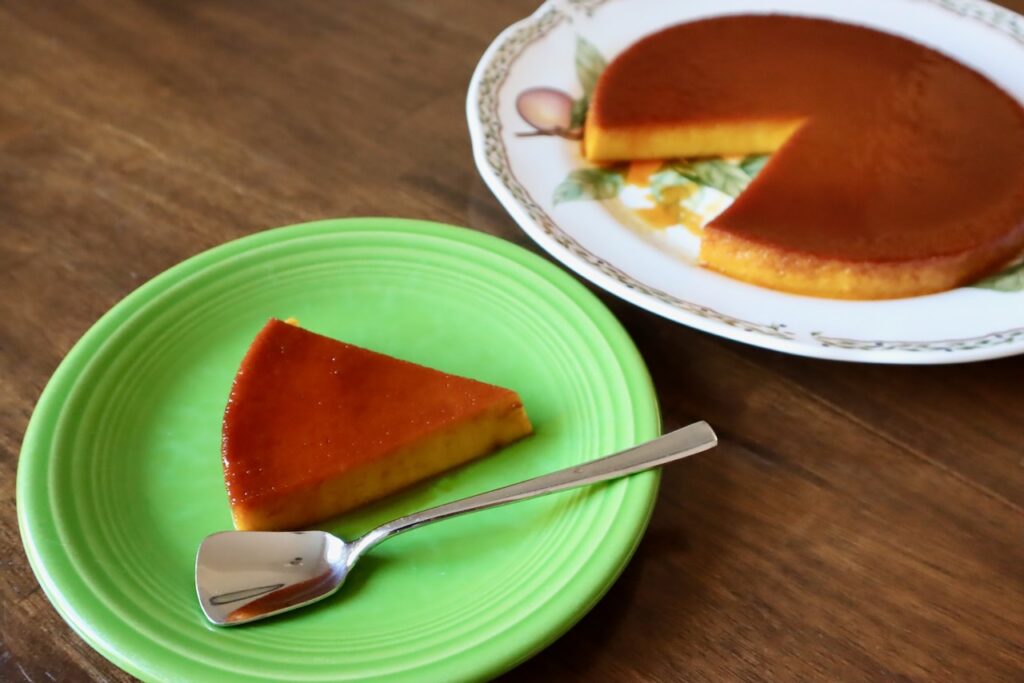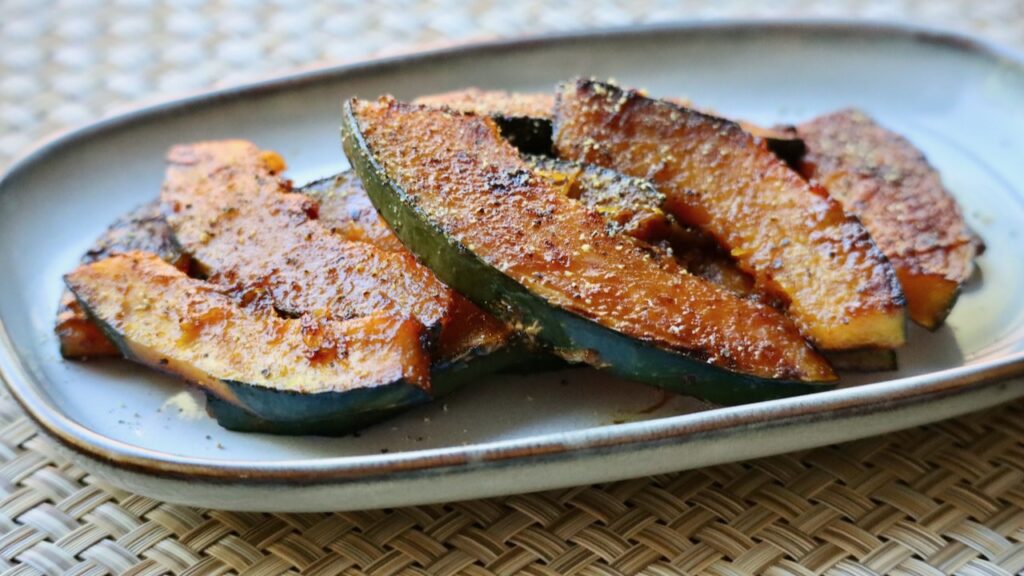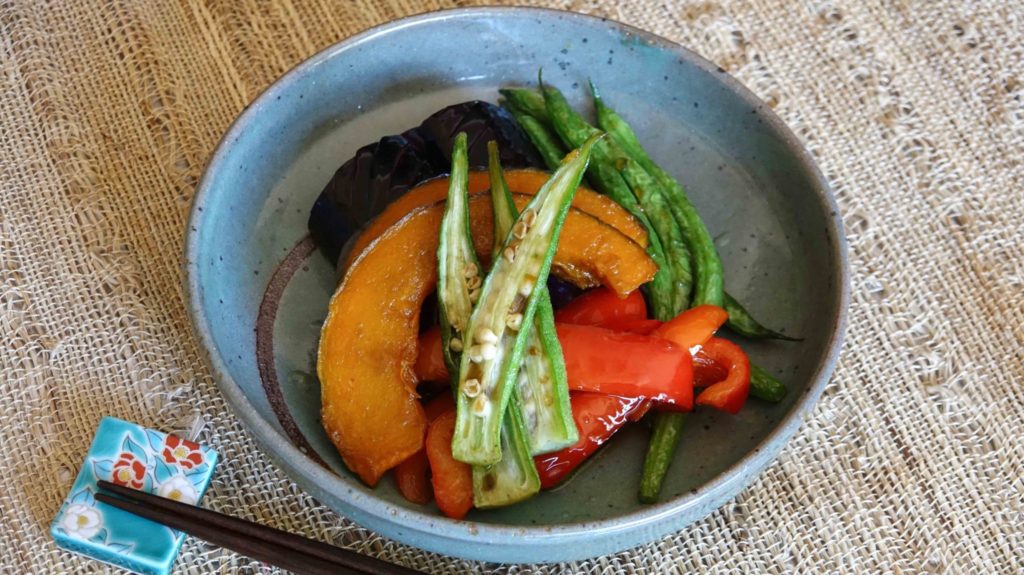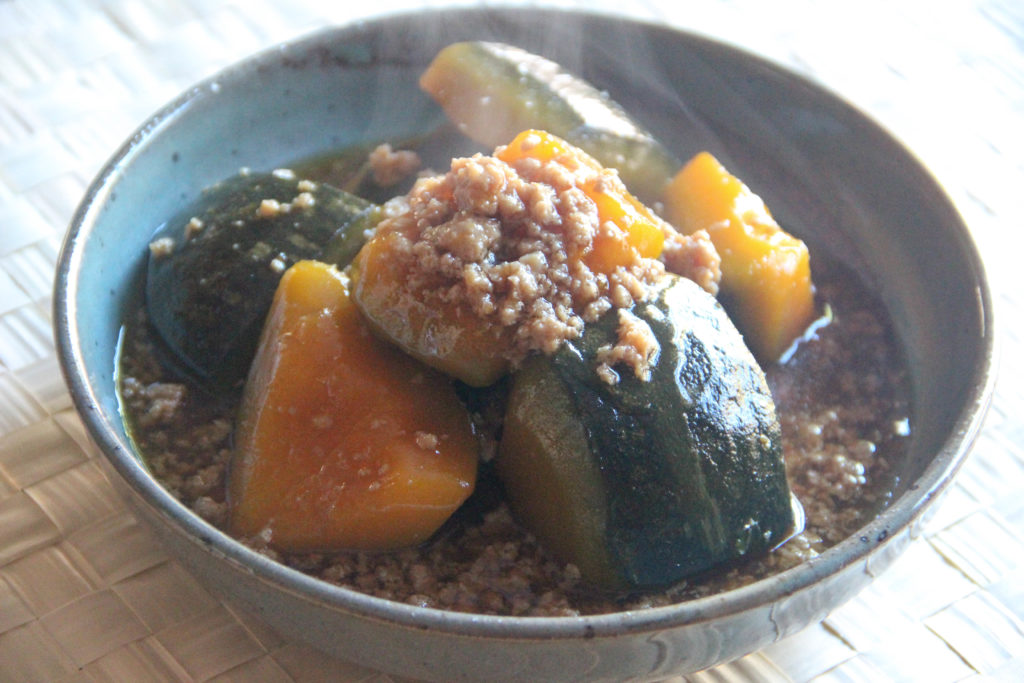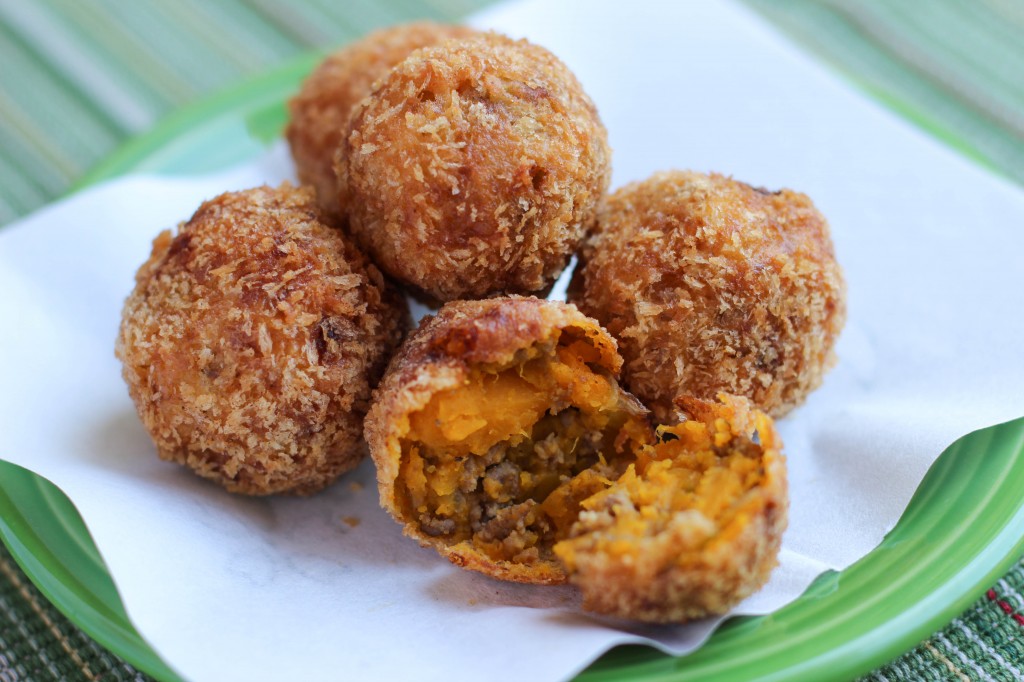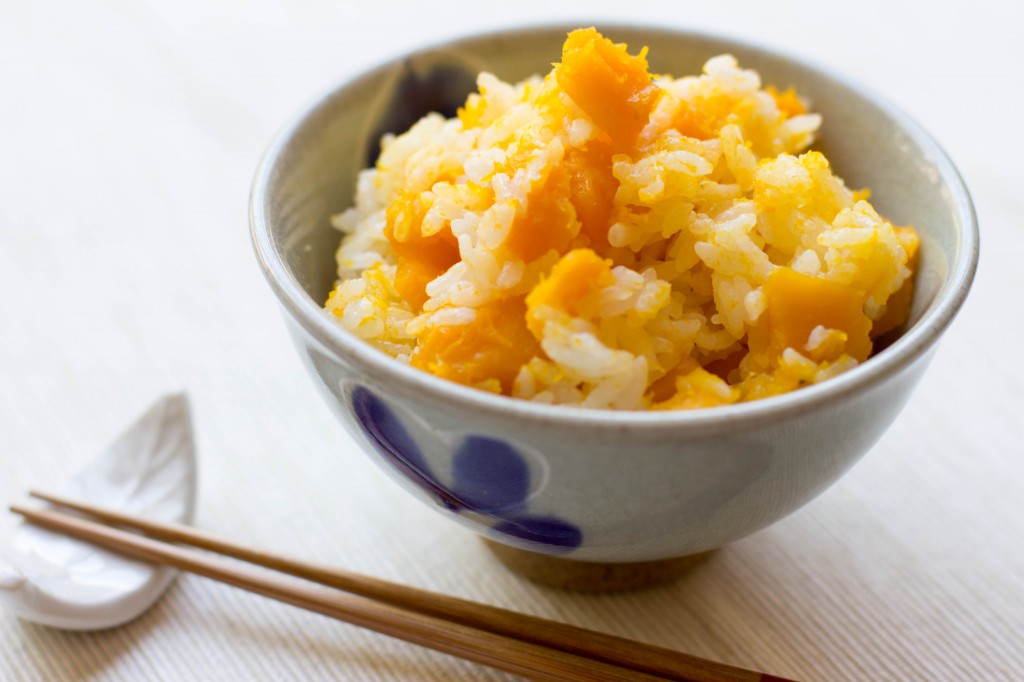Roasted Kabocha with Soy Maple Butter is an easy and delicious way to eat Kabocha squash, also known as Japanese pumpkin. Kabocha is cut into bite sized pieces and coated with melted butter mixed with maple syrup, olive oil, and soy sauce. There are so many ways to cook Kabocha (see all of our Kabocha recipes here), but this is one of my favorites, and it’s probably the easiest!
Pumpkin Purin is a Japanese-Western fusion dessert that combines Western-style custard pudding (called “Purin” in Japanese) with Japanese kabocha squash, a widely popular sweet pumpkin variety. While its exact origins are unknown, it has long been a staple at Western-style confectionery shops and bakeries in Japan, eventually becoming established as a beloved dessert that’s also popular to make at home.
Sautéed Kabocha with Butter and Soy Sauce is a great side dish to any entree, from Japanese to American foods. In fact, the rich savory flavor with a touch of sweetness of this Kabocha would be a nice holiday dinner addition.
Vegetable Agebitashi is deep-fried vegetables marinated in a Soy Sauce-based sauce. It can be eaten at room temperature or chilled. In summer, cold Agebitashi is very nice. Cook while it is still cool in the morning, and chill in the fridge in the afternoon until serving for dinner.
Kabocha Soboroni is a variation of Kabocha no Nimono, cooked pumpkin in seasoned broth. Soboro is ground meat (using chicken in this recipe) cooked with seasonings such as Soy Sauce and sugar. You stir the meat as you cook it, breaking it up to form small pieces or pebbles, giving Soboro its typical appearance and texture.
Korokke, deep fried mashed vegetables with meat, is one of everyone’s favorite dish in Japan. My family loves it, too. Korokke is usually made with mashed potatoes and ground beef, but today I substituted potatoes with Kabocha (Japanese pumpkin.) Kabocha is naturally very sweet and soft when steamed, and it can be mashed very easily. In fact, I even made it easier by using a microwave instead of steaming Kabocha.
Kabocha, the sweet Japanese squash, is a very versatile vegetable. You can simmer it in seasoned dashi broth (Kabocha no Nimono), or use it for salads, Tempura, or sweets like cakes and pies. It is great to know a variety of recipes, because using up a whole Kabocha can be challenging.
Nimono is usually seasoned with combinations of soy sauce, sugar, Sake or Mirin that give vegetables sweet and salty flavors. The seasoned broth in Nimono is not soup to drink, but only to give vegetables flavoring. It gives mild flavorings to vegetables and enhances the taste of the vegetables.
Japanese pumpkin, Kabocha, is very dense and sweet, different from pumpkin in the US. In Japan, Kabocha is in season in winter, and this dish reminds me of winter time there. When Kabocha is cooked, the inside becomes bright orange. Kabocha’s thick and dense texture is closer to sweet potatoes than squash. Kabocha no Nimono usually has a sweeter broth than some other kinds of Nimono. But you can change to your liking.
Kabocha is very hard to cut when it’s raw, so please be careful. First stab it with knife, then cut down. Trim the sharp edges of the rind from the cut pieces of Kabocha. That’s supposed to help Kabocha from dissolving, according to my mother.
If you like yam on Thanksgiving, you’d like this dish, just not as sweet. It could be a side dish to an American main dish such as roast chicken or meatloaf. Or with any kind of Japanese main dish, of course.
Kabocha is available at many supermarkets in the US.
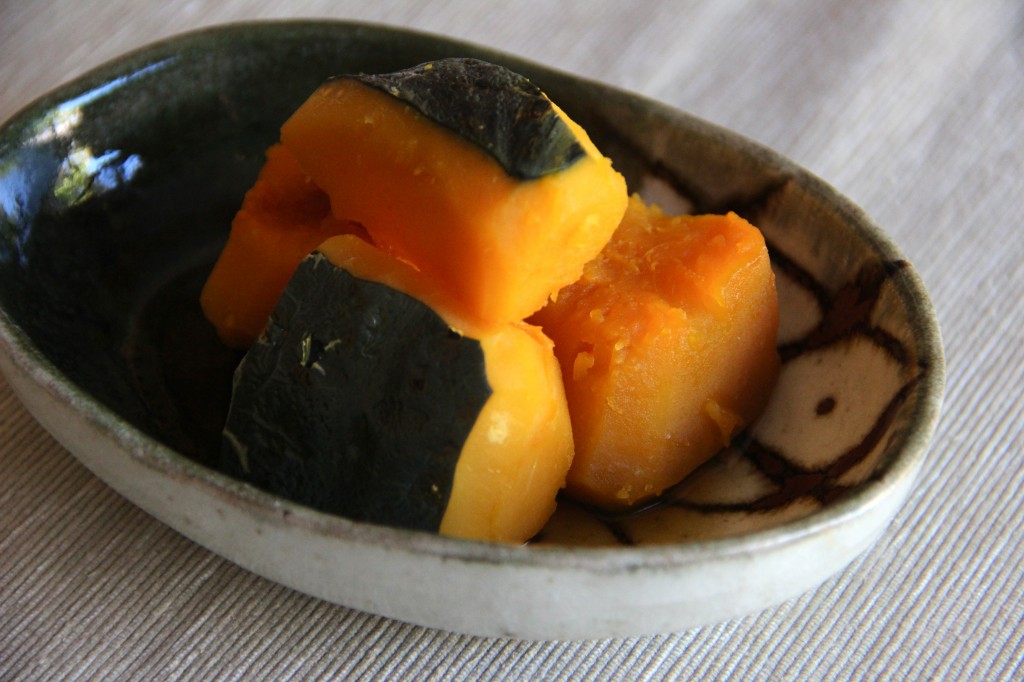
Kabocha no Nimono (Simmered Pumpkin) Recipe
Instructions
- Remove seeds and cut Kabocha into 3″ square pieces. Cut off sharp edges of the Kabocha pieces.
- Boil Dashi in a pot and put Kabocha in it. Cook Kabocha covered until tender at medium heat, about 20-30 minutes depending on how hard your Kabocha is.
- Add sugar, soy sauce, salt and Sake to the Kabocha. Reduce heat to medium low, and cook another 15 -20 minutes to reduce the broth a little.
- Remove from heat and let it sit covered until cool. As it cools, Kabocha will absorb more of the flavor from the broth. If you like it warm, reheat before serving.
Video
